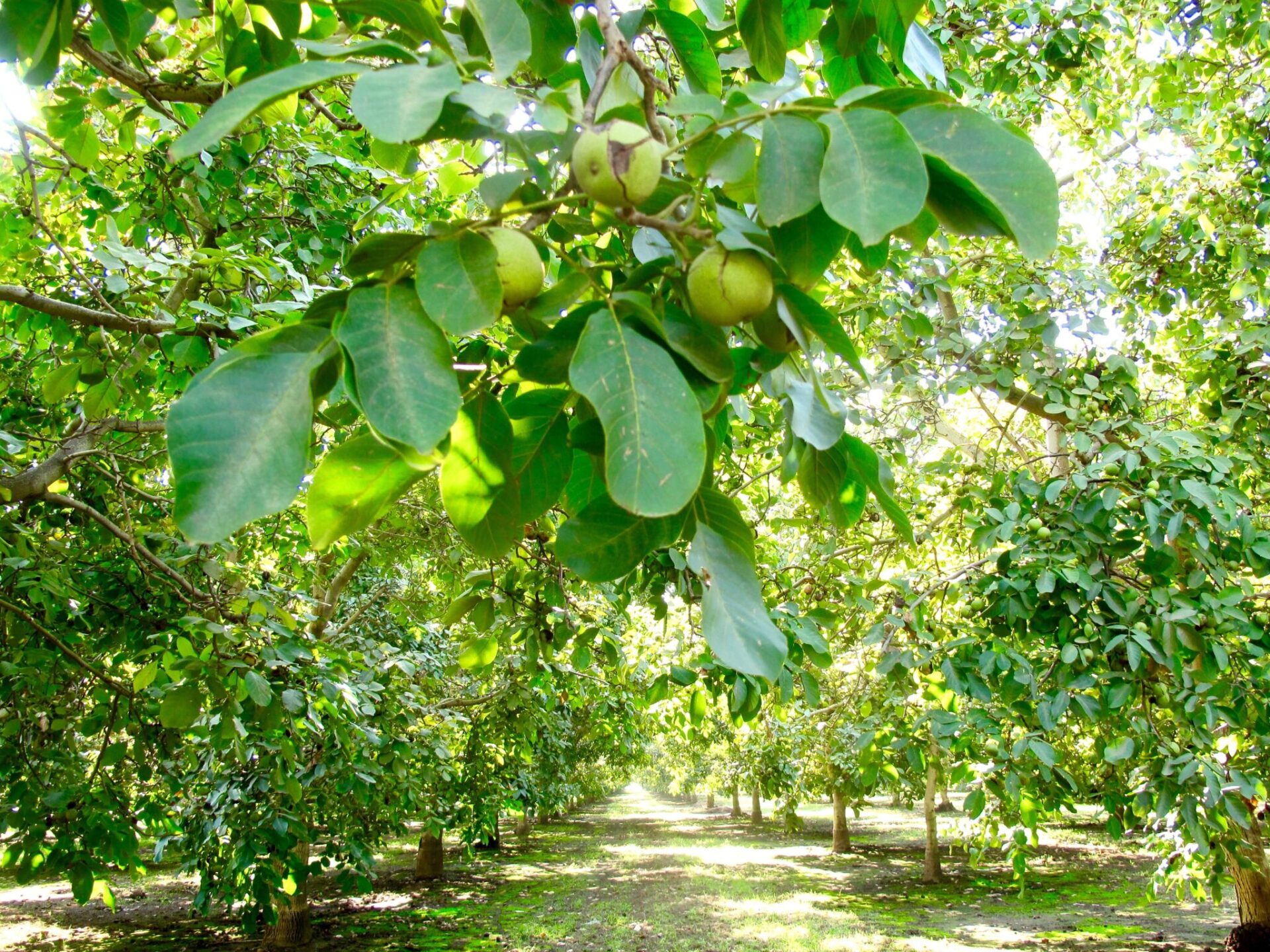
Tree nut yields can benefit from foliar zinc fertilization in many areas of California where soil conditions make uptake difficult.
Zinc, while needed in much smaller amounts than primary elements like nitrogen, phosphorus and potassium, is one of the most deficient micronutrients in California orchards. Deficiencies of zinc in various orchard crops across the state can be attributed to its low availability in Central Valley soils due to the high pH and sometimes presence of carbonates, which zinc will adsorb to at high pH, according to UCCE Farm Advisor for Madera and Merced counties Phoebe Gordon.
“Just a one-unit increase in pH will decrease zinc availability 100-fold,” Gordon said.
Zinc deficiency symptoms take different appearances depending on the crop, but they are often associated with new growth exhibiting small leaves and extremely short internodes that result in a resetting effect, according to Gordon. Additionally, yield loss will already be occurring once symptoms are detected.
Fertilization practices for zinc can be used to remediate a deficiency, ideally with a soil application; however, soil conditions in California orchards often make foliar applications the best option, Gordon noted.
Paired research trials, which included UC Farm Advisor Emeriti Bob Beede (1993) in pistachios and Joe Grant (1995) in walnuts, both showed that foliar sprays were best applied during early spring flush in pistachios and late spring flush for walnuts.
“Because mature walnut leaves absorb as much as young leaves, the late spring flush period results in increased surface area and therefore better absorption,” Gordon said. “This work also showed that the combination of zinc and nitrate resulted in phytotoxicity in pistachios and walnuts, and this combination is not recommended.”
Fall foliar sprays with zinc are adequate for addressing zinc deficiency in almonds as well as spring sprays. Work done by UCCE’s Franz Niederholzer has shown that low rates of foliar applied zinc in October (five pounds Zn sulfate per acre) are as effective as much higher rates applied in November (20 pounds Zn sulfate per acre), according to Gordon.
“In the past, it was suggested that these heavy, late applications, which defoliate the trees, may have the side benefit of reducing rust inoculum in an orchard,” she said. “However, work done by Macej Zweinecki at the Carbohydrate Observatory at UC Davis has recently shown how important carbohydrates are to tree health, and we now recommend that growers and PCAs do not do this.”
The story is different in pecans, Gordon said. Regarded as extremely zinc-hungry plants, pecan leaf sufficiency values are considerably higher than other tree species, becoming deficient when values dip below 30 ppm. The next closest is walnuts, becoming deficient below 18 ppm.
“In areas with low soil availability, [foliar] sprays [for pecans] should start at bud break and continue until growth stops,” Gordon said. “In mature trees, this will likely be three to five sprays, but in young, rapidly growing trees, you may need to spray weekly for several months.”
Gordon made it a point to note that as with other foliar applications (insecticides, fungicides), adequate spray coverage is essential since only a tiny fraction of applied zinc will be remobilized into other tissues, if at all. Additionally, she said, it is helpful to spray when humidity is high so that droplets do not evaporate before the zinc has time to be absorbed into leaf tissues.
“In our arid climate, this can be at night or early in the morning,” Gordon said.
For more information on zinc fertilization in California orchard crops, read UCCE’s In a Nutshell March 2021 newsletter.
















